
No Yard? Try Balcony Gardening
Last Updated: Mar 28, 2025Not everyone has a large enough yard to grow a food forest. Many renters may have no yard at all, but a lack of space is no reason to stop producing food at home. Growing food on your patio or balcony isn't just possible but can be fun and easy. Besides adding color right outside your door, it can also be a great way to reduce your environmental footprint and save money on groceries.
Table of Contents
- How Do You Start a Garden on a Balcony?
- Are Sun Angles Important for Balcony Gardening?
- Pots
- How Big Should Your Balcony Garden Pots Be?
- What Are the Best Pots for Balcony Gardening?
- What Rooting Mediums Are Best For Balcony Gardening?
- What Nutrients Are Best For Balcony Gardening?
How Do You Start a Garden on a Balcony?
Growing vegetables on your balcony, patio, or deck is an entirely different experience from growing in a garden. Bound by pots, plant roots can only travel so far and will quickly consume what food you do give them. But don't let this discourage you.
While it brings unique challenges, there is a fantastic sense of reward when you grow food from a container. So much so that even though I have an in-ground garden now, I still put together a pot or two of container vegetables just for fun.
Before you dive into growing a garden right outside your door, there are some things that you are going to need to consider. Factors such as sun angles and direct sunlight hours, choosing the right sized pot for what you aim to grow, and even what soil and nutrients to consider can inform you of what to plant before you even begin.

Are Sun Angles Important for Balcony Gardening?
While a balcony's size and a pot's diameter are essential questions for a container gardener, you must first ask yourself: how much sun does my space receive. Remember, fruit and vegetable-producing plants require full sun - at least 6-8 hours of direct sunlight. Not every growing area will provide this, but fear not, there is an opportunity waiting to blossom with every challenge.
These challenges can vary greatly, ranging from not enough direct sunlight to too much late afternoon heat or even constant dappled shade from a neighboring tree. I'd recommend reviewing the Rise article on demystifying plant sun requirements for a more detailed examination of what a plants' sun requirements mean. Once you know how much light your balcony receives and the direction it'll be coming from, you'll have a better idea of what plants will thrive there.
When it comes to potted plants, there is such as thing as too much sun. Too much direct sunlight on the wrong pots can quickly dry your soil and cook the roots. If you live in an arid climate, be wary of dark-colored containers for this reason. But if dark-colored pots are all you have, I found adding an extra layer of protection in the form of smaller flower pots in front of the vegetable containers both blocked direct light and attracted pollinators.
When all else fails, listen to what your plants are telling you. By checking your plants daily - or multiple times a day if possible - you will begin to notice how the plant looks or feels when it needs things like light. For example, plants naturally want to move towards the light, gently leaning over time. If your balcony or patio only receives light from one direction, be sure to rotate your plant regularly. This way, you'll be able to prevent your containers from becoming too heavy on one side, which is a sure-fire way to have tipping pots.
Finally, some balconies won't have the best light for plants. While some leafy greens can do well in partial sunlight, you can expect to see reduced yields. If there is space somewhere else on the property that you can move your plants to during the sunlight hours and back in the evening, that is also a strategy that I utilize. It is a bit of extra work, especially when they become bulky and start producing crops. But, you will build a closer relationship with the plants you grow, and you will quickly notice the difference between a freshly watered container and a dried one.

Pots
When deciding which container to plant a garden in, our aesthetic tastes often outweigh a plant's needs. As long as it can hold soil for the roots and allows excess water to drain out, your plants will likely be happy. But there are some things to consider before you plant your first pot.
When selecting a container, be sure to research the pros and cons of your options. Terracotta pots may be a great addition to your patio's theme, but they are porous and dry out quickly. Now, a hardy herb like rosemary can withstand periods of drought, but your tomatoes may suffer unless you're watering often.

How Big Should Your Balcony Garden Pots Be?
After you've researched what type of container would work best in your space, how big should your pots be? Well, Better Homes & Gardens recommends the bigger, the better, and I tend to agree. Aiming for 10-to-12 inch pots for your vegetables gives them enough room for the roots to expand.
You'll know if your container is too small when you lift it and see fibrous-roots trying to escape from the bottom. Make sure there is enough space for the roots to expand, especially for big plants like tomatoes. The last thing you want is to come outside to find your tub of tumbling toms tumbled to the ground because the pot was too small.
Okay, but what container is best?

What Are the Best Pots for Balcony Gardening?
Well, there is no best container, only what works best for you. When it comes to vegetable pots, you have to think about how much work you want to dedicate to tending them. You can choose from an array of reused containers or baskets, or commercial products like the Earthbox and Smart Pots - let's dive in.
Reused Containers
In the past few years, I have seen several friends begin growing gardens with items they found around the house. One such friend grew quite the successful garden in reusable grocery bags!
Be sure to choose bags with enough structure to keep the bag upright because loose, fabric bags run the risk of breaking down over the summer. Cut a few holes at the bottom of your bags for the excess water to drain, fill it with your potting mix, and you're ready to grow!
You should note that plastic breaks down over time with exposure to the elements. Depending on the selected bag, there may be the potential for it to leach into the soil. Always research your reusable containers beforehand to ensure that they're safe to be planted in, and keep an eye on your bags' condition. If they are beginning to appear worn, consider disposing of them.
If you have garden pots already, you can reuse the same containers year after year. Be sure to wash your pots with soap and water between seasons to prevent the transfer of pathogens. Also, note that if you're using plastic pots, UV and the elements can wear down your pots over time until they are brittle and prone to breakage.

Baskets
You can transform various woven baskets into planter pots for your summer crops. Lining them with moss allows for better moisture retention within the baskets while still allowing that soil's airiness.
Kerry Michaels at the Spruce recommends lining the baskets in a lightweight plastic layer with holes in it for an extra water retention layer. This method is an excellent option if your garden is in a place where it receives a lot of wind that would otherwise dry out the plant.
Be sure to avoid containers made with treated wood. Over time, chemical compounds can leach into the surrounding soil, damaging your plants and potentially accumulating into the food.

Earthbox
The Earthbox can be made at home or purchased online and is an exciting planter that makes container gardening low-maintenance for the busy gardener. Using moisture wicking through capillary action to saturate the soil, you fill a water reserve at the container's bottom and then leave the plant to do the rest. By separating the growing media from the water, the creators of the Earthbox claim this system prevents root rot and mold, which can affect plants that are overwatered.
There are guides online for creating a homemade variant of the Earthbox. Or you can purchase one directly from the official website, which comes with a one-year 100% satisfaction guarantee or your money back.
Smart Pots
Smart Pots are great planting containers that you can often find at your local gardening center. Farmers and gardeners alike use these fabric popup containers for a variety of crops. The pot's breathable material both allows airflow to get at your plant's roots from every angle and promotes fibrous root growth. This process creates more surface area for the absorption of both nutrients and water.
The containers are lightweight and easy to wash at the end of the season. After a quick clean, fold them up and store them away within your seasonal storage for next year.
What Rooting Mediums Are Best For Balcony Gardening?
When growing potted plants, you need to use a different growing medium than what you find in an in-ground garden. Outdoor soil brings numerous variables that cause potted plants plenty of struggles, such as poor drainage and pests.
If you're choosing to purchase a store-bought potting mix, your local garden supply store should have plenty of options for you to consider. But if you're looking to make your blend, there are plenty of recipes online to read through.
My current favorite potting soil mix is an even blend of compost, peat moss, and vermiculite. I have found this mixture, which I learned from Mel Bartholomew's Square Foot Gardening method, to give potted plants an extra boost at the beginning of the season. So much so that in my first year of using it, I found myself having to transplant all twelve pots into bigger containers!
Not a fan of peat or maybe looking for a more sustainable alternative? Alex Darc dug into some peat alternatives to add to her garden, including coconut coir and PittMoss Prime. She found that these other materials worked well but required more attention to pH and moisture levels than the traditional combo.
Now, if you're like me and like to make use of last year's resources again, always be sure to sterilize your soil before reusing it. You want to prevent the spread of soil-borne diseases or bacteria to your new plants. By adding seasonal top-ups of fresh potting soils and nutrients, I find this process more economical than starting fresh every year.
When you fill your pots with whichever mix you choose, always be sure to leave space in the top 2-to-3 inches from the lip. It is best to do this to ensure that you can thoroughly water in your plants without overflowing the container!
On top of your soil choice, it is always beneficial to consider adding mulch to the top of your soil. After the initial planting, your topsoil is under direct sunlight and drying winds until your plant reaches maturity. Adding at least an inch to three inches of mulch helps keep the soil cool and moist, perfect for root growth. After some time to grow, your plants should fill the pot's top and shade the potting medium from the elements.
Gardening & Outdoor
Shop the best high-performing gardening and outdoor products that impact your health, wealth, and the planet through their use.

Englander Grizzly Camp Stove ESW0030
Englander
In Stock

Englander Cub Camp Stove ESW0034
Englander
In Stock

Englander Black Bear Camp Stove ESW0032
Englander
In Stock
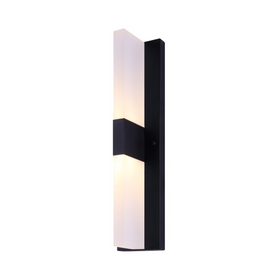
Canarm CORIN LED Black Outdoor Light
Canarm
Out of Stock
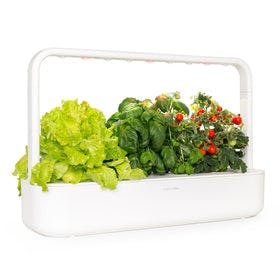
Click & Grow Smart Garden 9
Click & Grow
In Stock
3 Colors
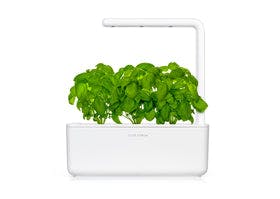
Click & Grow Smart Garden 3
Click & Grow
In Stock
3 Colors

Englander Grizzly Kit Camp Stove ESW0031
Englander
In Stock

Englander Black Bear Kit Camp Stove ESW0033
Englander
In Stock
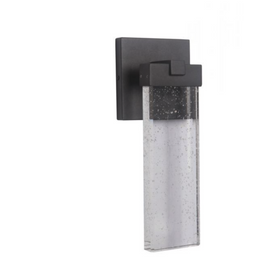
Craftmade Aria Outdoor LED Wall Mount Light
Craftmade
In Stock
2 Colors
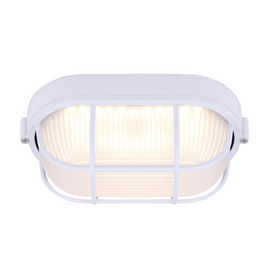
Canarm LOL386WH White LED Outdoor Sconce
Canarm
In Stock
What Nutrients Are Best For Balcony Gardening?
Adding nutrients to any garden is essential, but it is critical for your balcony crops. Not being connected to in-ground resources or last year's leftovers, potted plants are dependant on you for food.
But what is the best way to feed your growing plants? I divide the nutrients for my potted garden into two groups:
- slow-release, and
- water-soluble fertilizers.
As slow-release fertilizers break down over time, they release controlled amounts of nutrients. When using slow-release, be sure to follow the instructions of your preferred fertilizer. The last thing you want is to give your container too much and shock your tender plants. Remember, overfeeding can be just as bad as underfeeding a plant!
When choosing a fertilizer, look for one with balanced Nitrogen (N), Phosphorous (P), and Potassium (K). These nutrients give the plant a steady food source over several months to promote root and leaf growth. That said, if you are planning on growing fruiting plants such as tomatoes and peppers, be sure to add Calcium (Ca) and Magnesium (Mg) into your mix. Low calcium levels are not ideal for any plant and can also lead to malformed fruits afflicted with bud rot.
But just because you have slow-release doesn't mean you don't need to feed your plants later in the season, especially if they are heavy feeders.

In the next article, we will be finishing up balcony gardening by diving into water-soluble nutrients, what plants to consider, and some other tips to help you get started on your container garden!
Tanner Sagouspe
Tanner Sagouspe has a Masters in Environmental Management and is a Permaculture Designer who promotes tackling the climate crisis at home.

